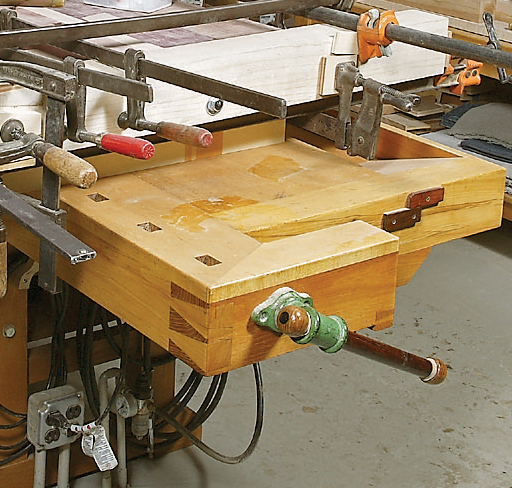
Is there some special function for the “L”-shaped vises sometimes seen on European style benches?
Andy Rae: Known as a tail vise, this type of vise has two primary holding purposes. Work is grasped between the main jaws, one of which is the dog-legged end of the bench itself and, as such, offers a particularly sturdy clamping surface. Or, work can be clamped to the top of the bench between bench dogs. The dogs, which are wooden or metal posts, fit in a series of holes in the top of the vise and along the front of the bench. Many woodworkers mistake the short “L” of the vise as a convenient spot for clamping. Please resist the urge, or you’ll risk damaging the vise. The reason for the 90-degree turn is to provide support for a wooden or metal rail that guides the vise underneath the benchtop.
Richard Jones: I’m guessing you’re referring to the end vise. The long leg of the L has a series of dog holes in it. These are in the same plane as the fixed dog holes in the main part of the bench. The primary purpose of the vise is therefore to clamp boards on the bench between a pair of dogs.





